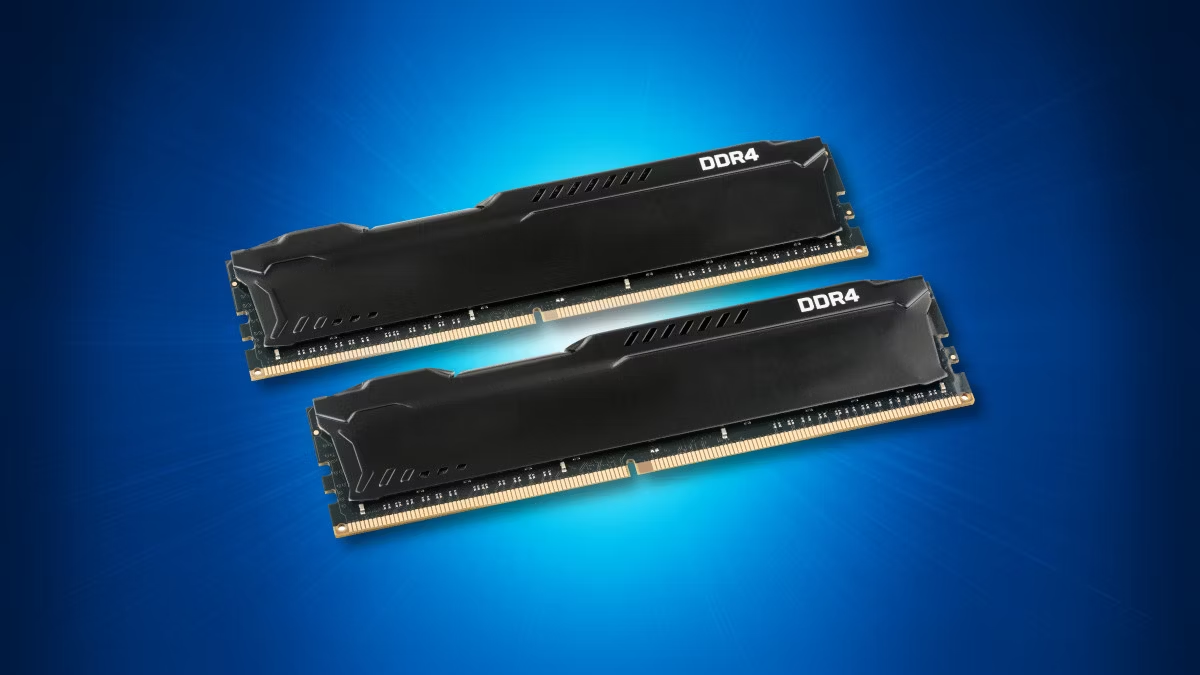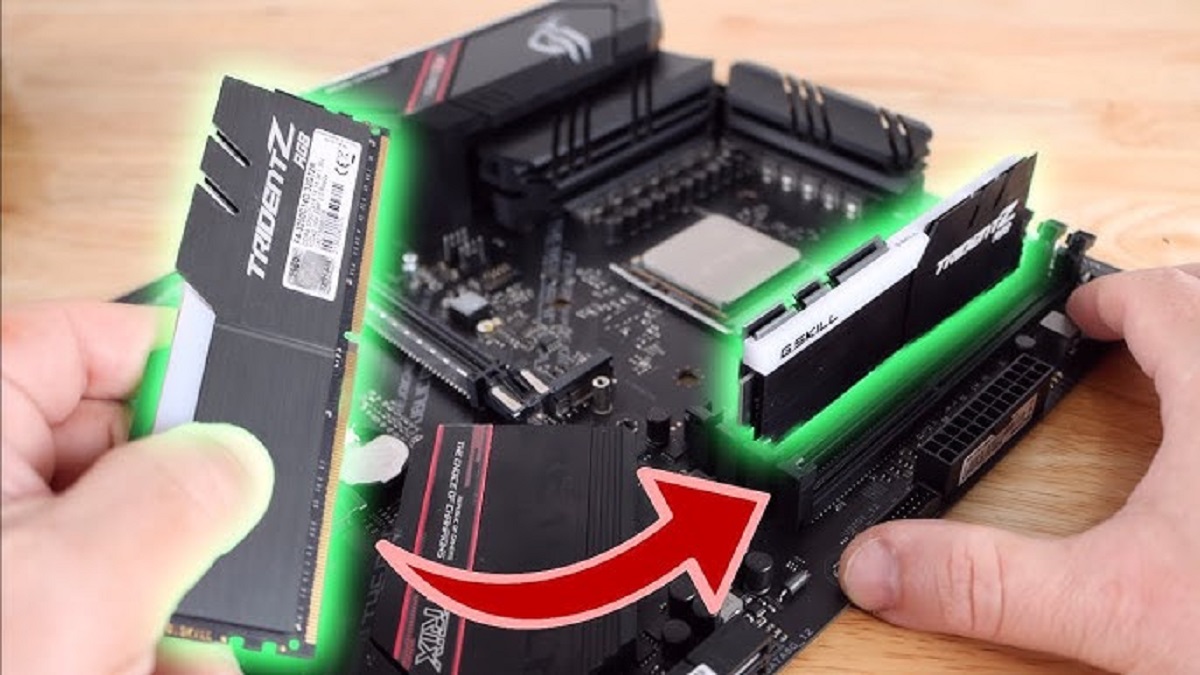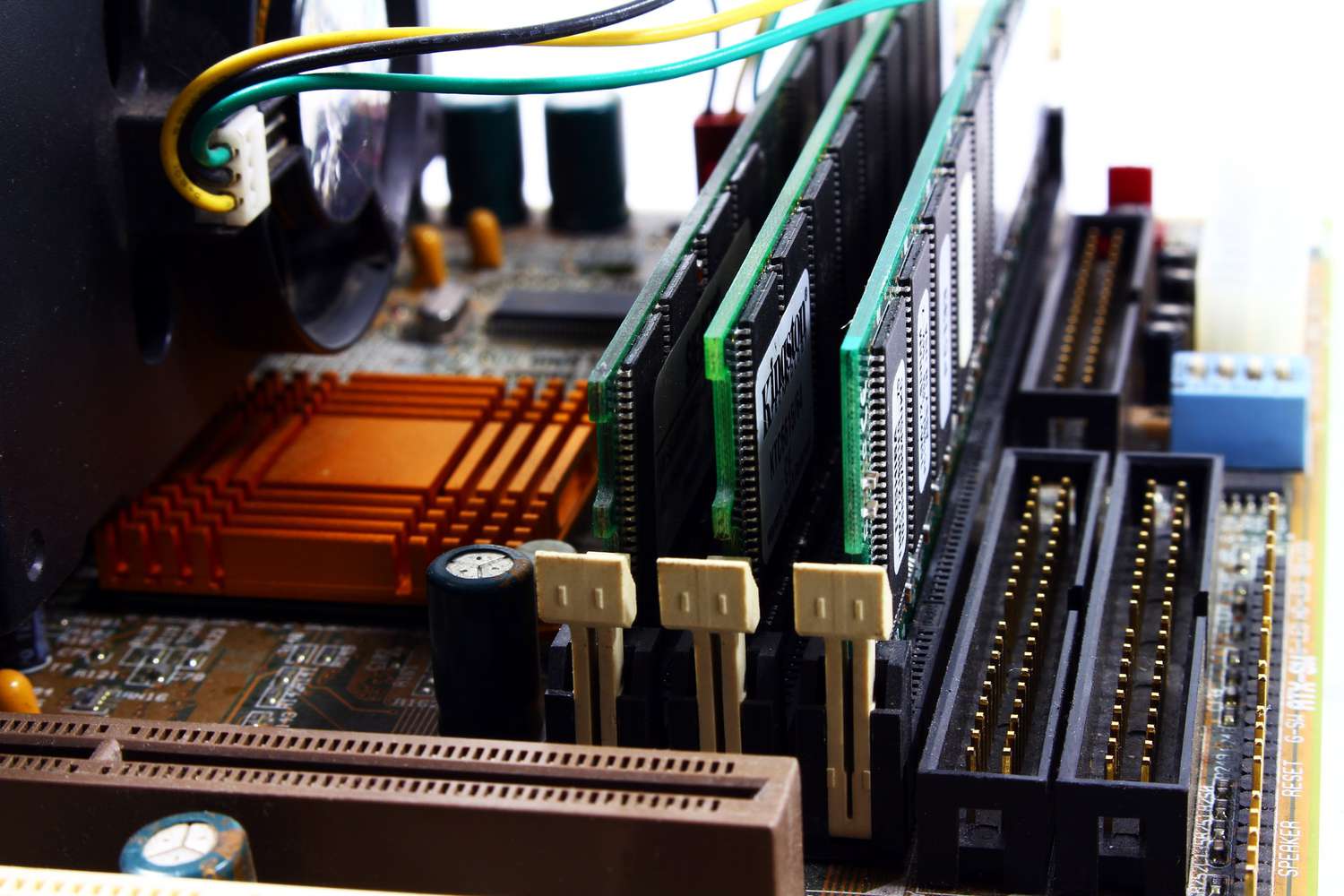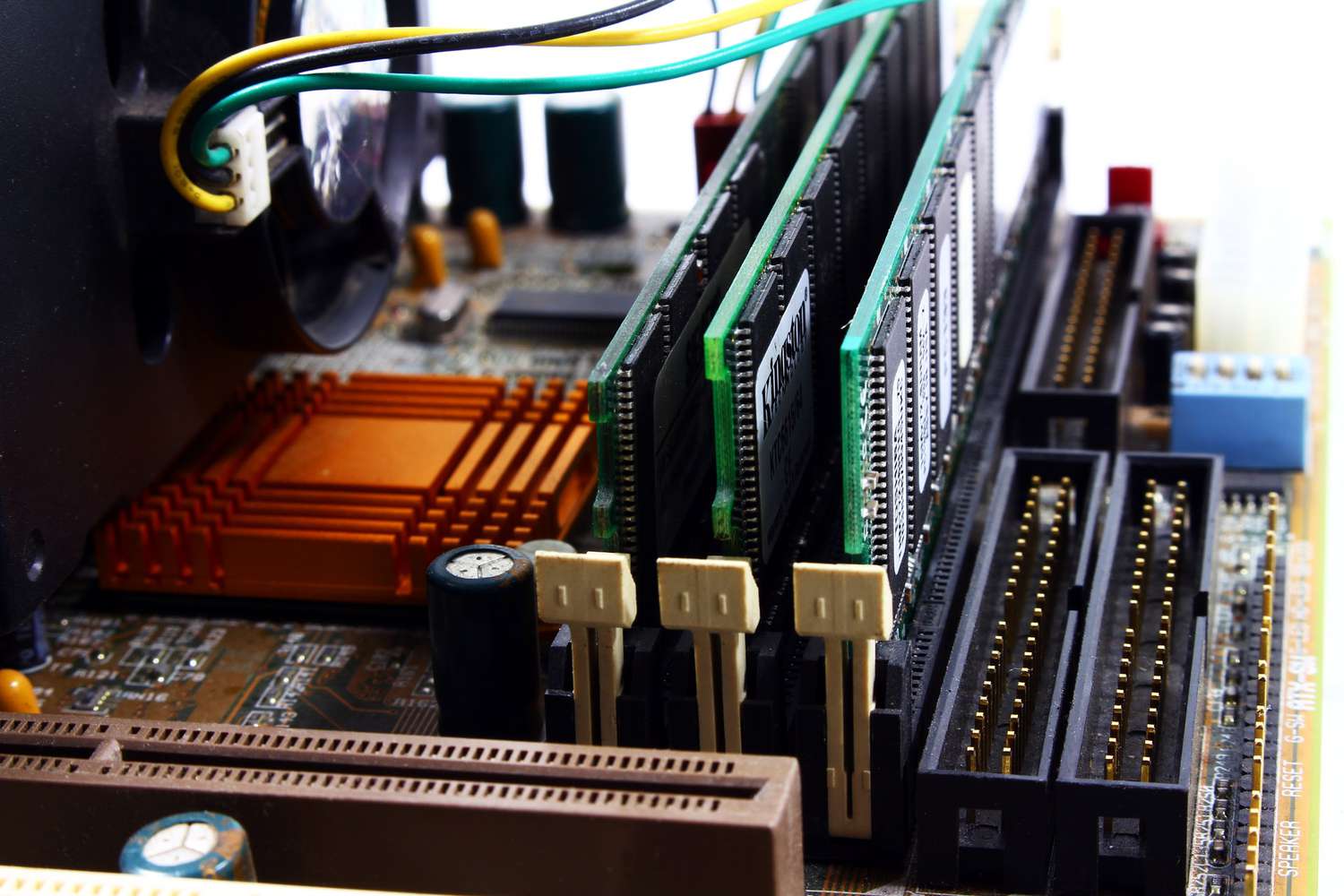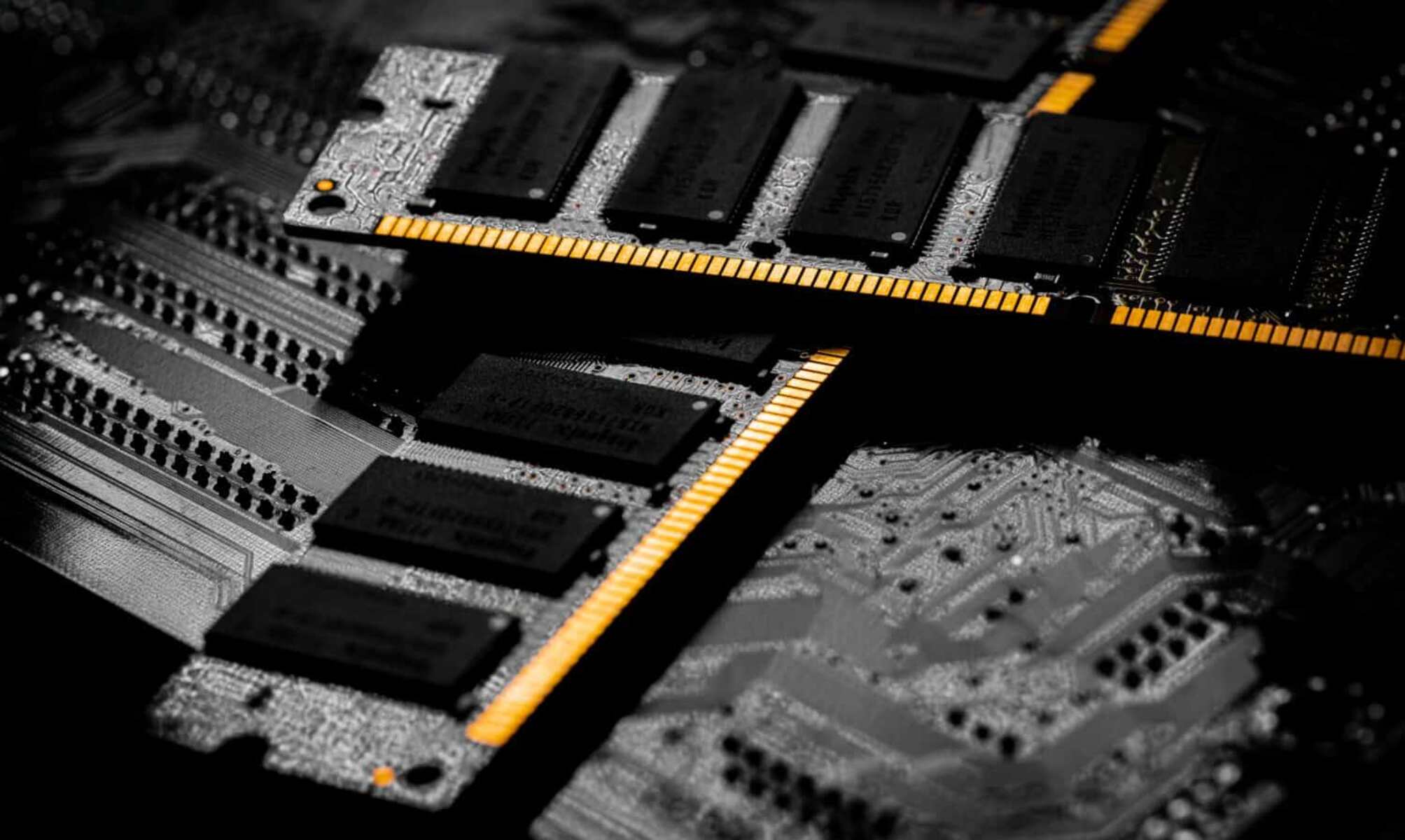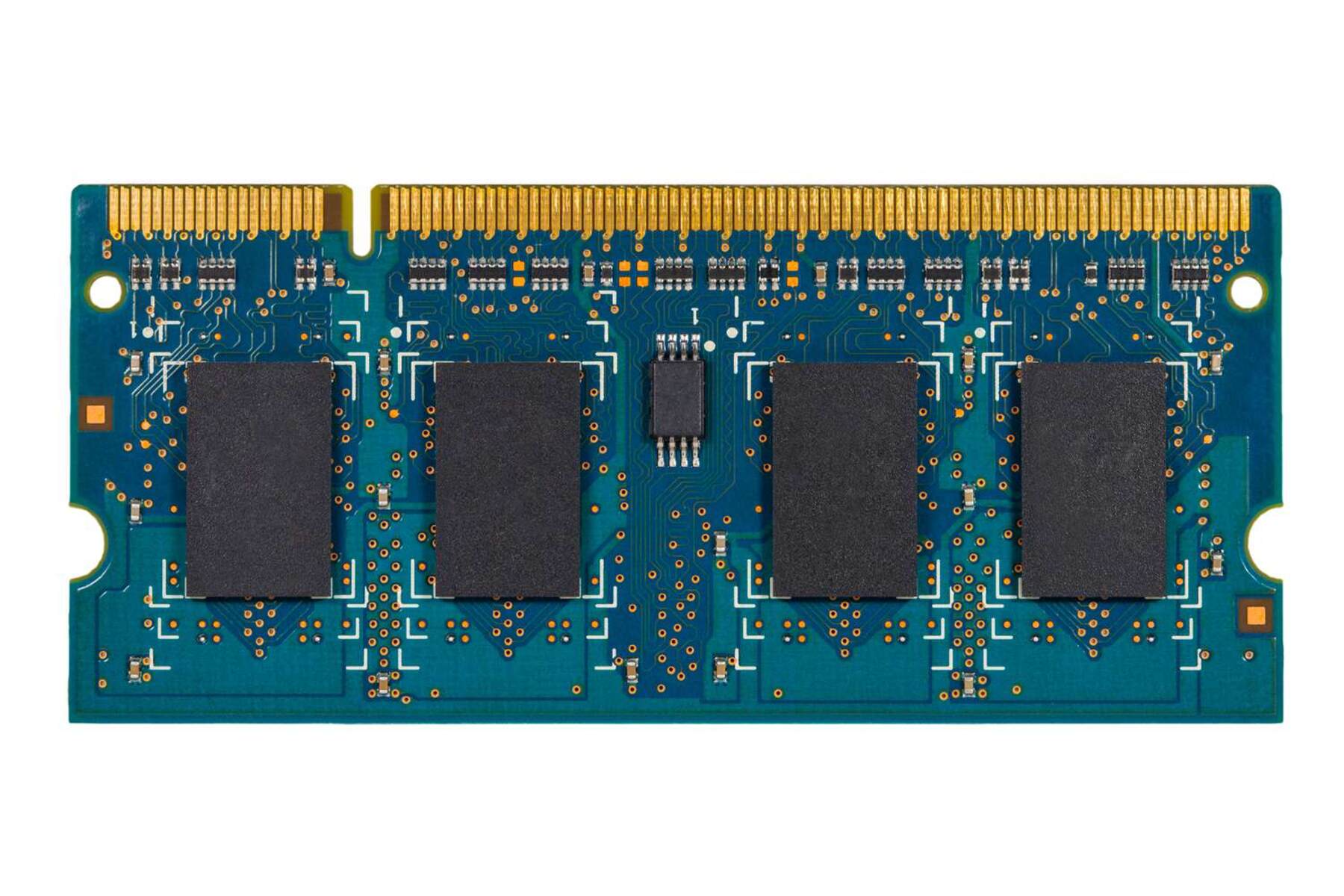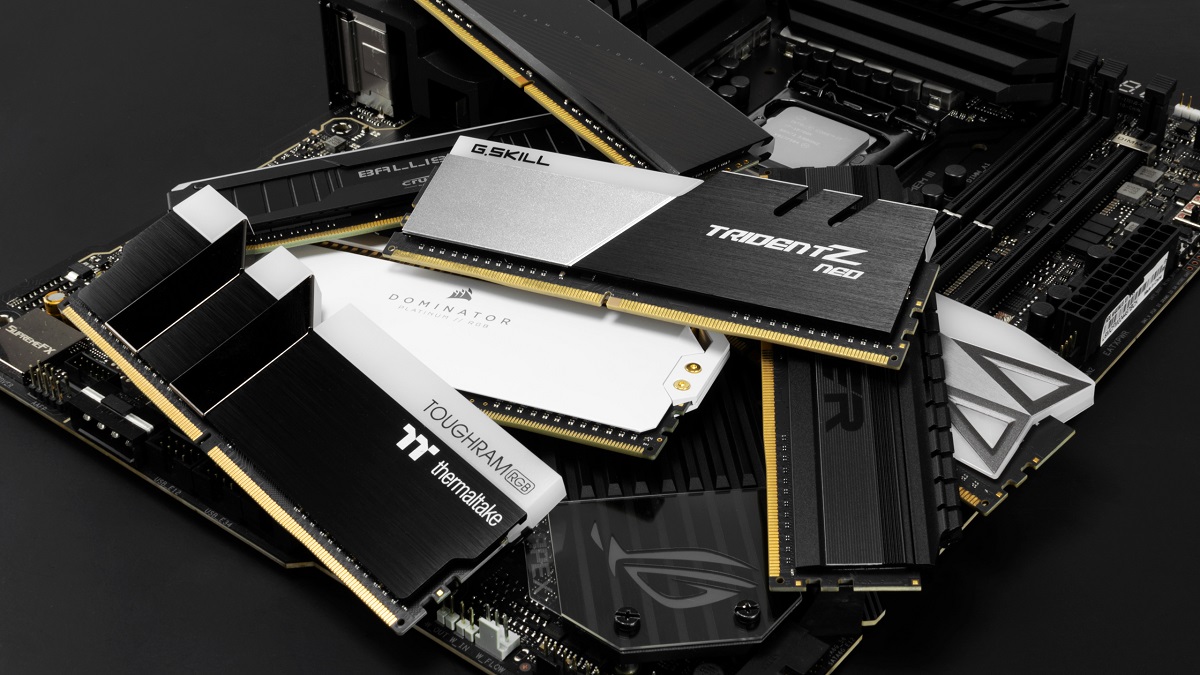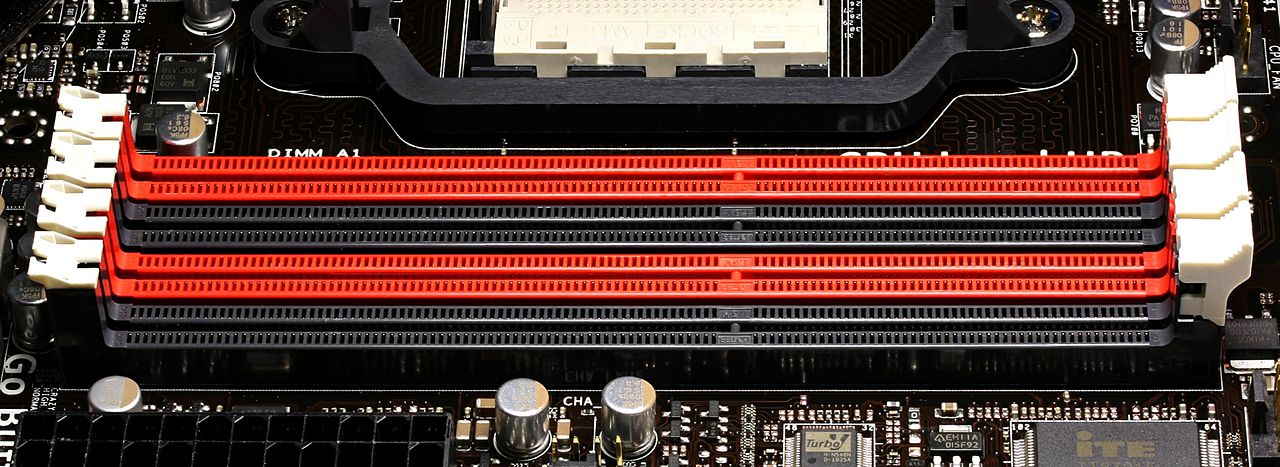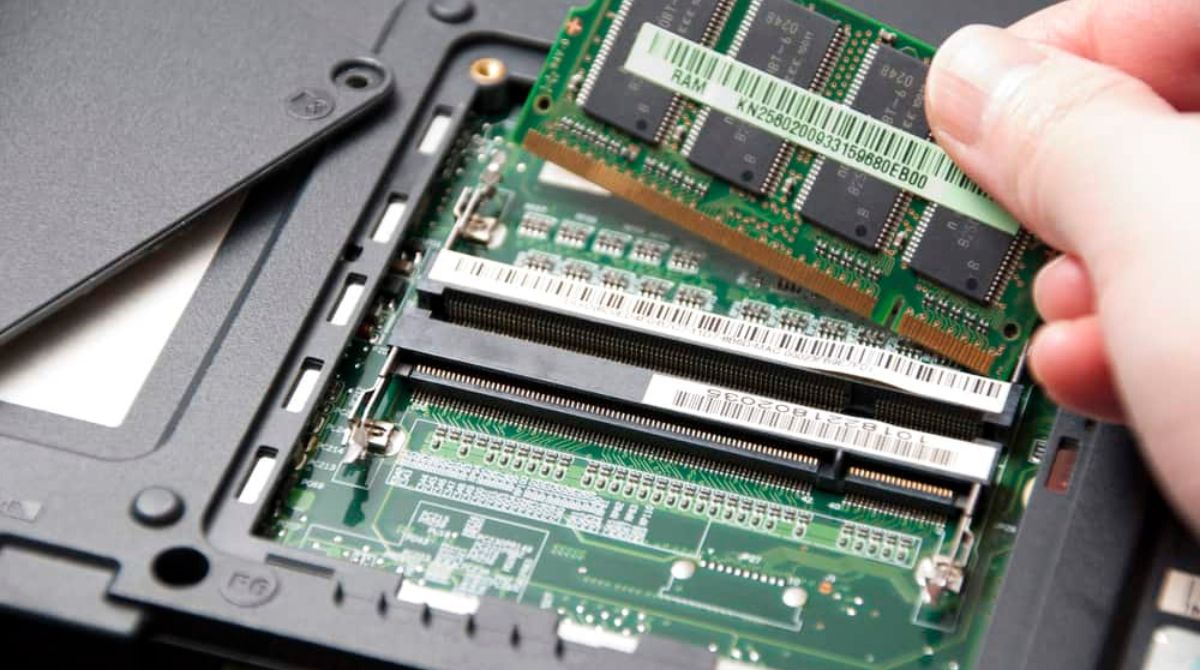Introduction
Welcome to the world of computer hardware, where every component plays a vital role in determining the performance of your system. When it comes to memory, Random Access Memory (RAM) is a crucial component that heavily influences the overall speed and efficiency of your computer.
RAM is responsible for temporarily storing data that your computer needs to access quickly. It acts as a high-speed intermediary between the processor and the storage drive, allowing for faster data retrieval and improved multitasking capabilities. Without sufficient and efficient RAM, your computer may experience lag, slow program executions, and overall sluggish performance.
As technology continues to advance, so does the variety of RAM options available. One such advancement is dual channel RAM. Designed to provide even greater performance enhancements, dual channel RAM has become increasingly popular among computer enthusiasts and gamers.
In this article, we will explore what dual channel RAM is, how it works, its benefits over single channel RAM, and how you can determine if your computer supports it. Let’s dive in and discover the exciting world of dual channel RAM!
Explaining RAM
Before we delve into the concept of dual channel RAM, let’s first understand the basics of RAM itself. RAM, short for Random Access Memory, is a type of computer memory that temporarily stores data that the processor needs to access quickly. It serves as a bridge between the processor and the hard drive, allowing for faster data retrieval and improved system performance.
When you open a program or file, the data from that program or file is loaded into the RAM for quick access by the processor. This allows the processor to quickly retrieve the necessary information, resulting in faster program execution and smoother multitasking capabilities.
RAM operates at a much faster speed than traditional storage devices like hard drives or solid-state drives (SSDs). Unlike storage devices, RAM is volatile memory, meaning its contents are cleared when the computer is turned off or restarted. Therefore, it is essential to have a sufficient amount of RAM to accommodate all the data needed for your computer’s tasks.
The amount of RAM you have in your system directly affects its overall performance. Insufficient RAM can lead to slow program execution, system freezing, and crashes, especially when running resource-intensive applications or multitasking heavily.
It’s also worth noting that RAM speed plays a crucial role in determining its performance. The higher the speed of your RAM, the faster your computer can access and process the stored data. RAM speed is measured in megahertz (MHz) and can have a significant impact on the overall responsiveness and speed of your system.
Now that we have a better understanding of RAM and its importance in computer performance, let’s dive into the concept of dual channel RAM and explore its benefits and functionality.
What is Dual Channel RAM?
Dual channel RAM, also known as dual-channel memory, is a technology that allows for increased memory bandwidth by using two identical memory modules simultaneously. It is designed to provide better memory performance compared to single-channel configurations.
With dual channel RAM, the memory controller in your computer’s motherboard can access two memory modules simultaneously, effectively doubling the data transmission rate. This results in improved memory performance and faster data transfer speeds, which can significantly enhance overall system responsiveness.
To take advantage of dual channel RAM, you need to install two identical memory modules in specific slots on your motherboard. These slots are usually color-coded, with each color representing a separate memory channel. By installing memory modules in matching colored slots, you are enabling dual channel mode.
It’s important to note that for dual channel mode to work optimally, both memory modules should have the same capacity, speed, and timings. Mismatched modules can negatively impact performance and may result in stability issues.
Dual channel RAM offers several advantages over single-channel setups. Firstly, it increases memory bandwidth, allowing for faster data transfer between the memory and the processor. This can result in improved overall system performance, especially during memory-intensive tasks such as gaming or video editing.
Additionally, dual channel RAM can enhance multitasking capabilities by providing a higher throughput of data. This means your computer can handle multiple applications simultaneously without experiencing significant performance drops or slowdowns.
It’s worth mentioning that while dual channel RAM offers performance benefits, the improvements may not be noticeable in everyday tasks such as web browsing or word processing. The advantages of dual channel RAM become more apparent in resource-intensive applications or tasks that heavily rely on memory performance.
Now that we understand what dual channel RAM is and how it works, let’s explore the specific benefits it brings to your computer system.
Benefits of Dual Channel RAM
Dual channel RAM offers several advantages over single channel configurations, making it a desirable choice for those seeking enhanced memory performance. Let’s explore some of the key benefits of using dual channel RAM:
- Improved Memory Bandwidth: One of the primary benefits of dual channel RAM is the increased memory bandwidth it provides. By utilizing two memory modules simultaneously, dual channel RAM effectively doubles the throughput of data between the memory and the processor. This allows for faster data transfer and retrieval, resulting in improved overall system responsiveness.
- Enhanced System Performance: With higher memory bandwidth, dual channel RAM can significantly enhance system performance, particularly in memory-intensive tasks such as gaming, video editing, and 3D rendering. By providing a higher throughput of data, dual channel RAM ensures smoother multitasking and faster program execution.
- Efficient Multitasking: Dual channel RAM improves multitasking capabilities by enabling your computer to handle multiple applications simultaneously more effectively. The increased memory bandwidth allows for seamless data transfer between memory modules, reducing bottlenecks and performance drops when running resource-intensive applications.
- Stability and Reliability: Dual channel RAM configurations are generally more stable and reliable than single channel setups. By balancing the workload between two memory modules, the system operates more efficiently and experiences fewer memory-related issues such as crashes or freezing.
- Future-Proofing: Investing in dual channel RAM ensures that your system is well-equipped to handle future memory demands. As software and applications become more demanding, having dual channel RAM provides an added advantage and ensures your system can handle the increased memory requirements of future updates.
It’s important to note that while dual channel RAM offers significant performance benefits, the impact may vary depending on the specific tasks and applications you use. Everyday tasks like web browsing or word processing may not see a noticeable improvement compared to more resource-intensive activities.
Now that we’ve explored the benefits of dual channel RAM, let’s delve into how dual channel RAM works and the difference between single channel and dual channel configurations.
How Does Dual Channel RAM Work?
Dual channel RAM works by utilizing two identical memory modules to increase memory bandwidth and improve overall performance. Let’s take a closer look at how this technology works:
Firstly, it’s important to understand that dual channel RAM relies on the memory controller in your computer’s motherboard. The memory controller is responsible for managing the flow of data between the processor and the RAM modules.
To enable dual channel mode, you need to install two identical memory modules in specific memory slots on your motherboard. These slots are usually color-coded, with each color representing a separate memory channel. By installing memory modules in matching colored slots, you effectively enable dual channel mode.
When your computer boots up, the memory controller recognizes the presence of two memory modules installed in the appropriate memory slots. It then operates in a dual channel configuration, allowing simultaneous data transfer and retrieval between the memory and the processor.
In a dual channel setup, the memory controller divides the data into two streams, sending them simultaneously to the two memory modules. This enables higher memory bandwidth by effectively doubling the data transmission rate compared to single channel configurations.
By utilizing two memory modules at the same time, dual channel RAM offers increased data throughput, reducing potential bottlenecks and improving overall system performance. The improved memory bandwidth ensures faster data transfer and retrieval, resulting in smoother multitasking and faster program execution.
While dual channel RAM can enhance performance, it’s important to note that not all applications and tasks will benefit equally. Activities that heavily rely on memory performance, such as gaming, video editing, and 3D rendering, will experience the most significant improvements.
Now that we understand how dual channel RAM works, let’s explore the difference between single channel and dual channel RAM configurations.
Difference Between Single Channel and Dual Channel RAM
The main difference between single channel and dual channel RAM configurations lies in the number of memory modules utilized and the resulting memory bandwidth. Let’s explore the key differences between these two configurations:
Memory Modules: In a single channel RAM configuration, you use a single memory module, while in a dual channel setup, you use two identical memory modules. The use of two modules in dual channel mode allows for increased memory bandwidth and improved data transmission rates.
Memory Bandwidth: Single channel RAM operates with a smaller memory bandwidth compared to dual channel configurations. Dual channel RAM effectively doubles the memory bandwidth by utilizing two memory modules simultaneously, resulting in faster data transfer and retrieval.
Throughput and Performance: Due to the increased memory bandwidth, dual channel RAM offers improved throughput and overall system performance. This is particularly noticeable in memory-intensive tasks such as gaming, video editing, and multitasking, where the dual channel configuration can handle higher data loads more efficiently.
Resource Allocation: In a single channel RAM setup, the memory controller allocates all memory accesses to a single memory module. In a dual channel configuration, the memory controller can distribute memory accesses between the two modules simultaneously, allowing for more efficient resource allocation and reduced bottlenecks.
Capacity and Flexibility: Both single channel and dual channel RAM configurations can support various memory capacities. However, dual channel setups often provide more flexibility when it comes to upgrading or expanding memory capacity. You can easily add another identical memory module to further enhance performance without replacing the existing module.
Compatibility: Most modern motherboards support dual channel RAM configurations, but it’s essential to check your motherboard’s specifications to ensure compatibility. Some older systems, particularly those with single-channel memory controllers, may not support dual channel functionality.
It’s important to note that while dual channel RAM offers increased performance benefits, the actual impact on everyday tasks may not be significantly noticeable. Simple activities like web browsing or word processing may not take full advantage of the dual channel configuration, but tasks that heavily rely on memory performance will see a noticeable improvement.
Now that we understand the difference between single channel and dual channel RAM, let’s explore how to check if your computer supports dual channel RAM and how to enable it if supported.
Does My Computer Support Dual Channel RAM?
If you’re considering upgrading your RAM to a dual channel configuration, it’s important to determine whether your computer supports dual channel RAM. Here’s how you can check:
- Check Your Motherboard Specifications: The first step is to look up the specifications of your computer’s motherboard. You can typically find this information in the user manual or by visiting the manufacturer’s website and searching for your motherboard model. Look for details regarding memory support and whether dual channel configuration is supported.
- Inspect the Memory Slots: Observe the physical layout of the memory slots on your motherboard. Dual channel memory slots are usually color-coded, with each color representing a separate memory channel. If your motherboard has matching colored slots, it is an indication that it supports dual channel RAM. However, keep in mind that some motherboards may not follow this color-coding convention, so it’s important to refer to the specifications for clarification.
- Refer to the User Manual: Consult the user manual that came with your computer or motherboard. It should provide detailed information on the supported memory configurations, including whether dual channel is supported. Look for sections specifically related to memory installation and configuration.
- Use System Information Tools: You can also utilize system information tools to check your computer’s memory configuration. Operating systems like Windows have built-in tools that provide information about your system, including the memory setup. To access this information, simply search for “System Information” in your Windows Start menu and navigate to the “Memory” section. Look for details related to the memory channels and configuration.
Remember that even if your motherboard supports dual channel RAM, you need to have two identical memory modules of the same capacity, speed, and timings to take full advantage of dual channel configuration.
If your computer does not support dual channel RAM or if you’re unsure, it’s always recommended to consult the manufacturer’s documentation or seek assistance from a knowledgeable professional to ensure a compatible and optimized memory setup.
Now that we’ve determined whether your computer supports dual channel RAM, let’s explore how to check if dual channel RAM is already enabled on your system.
How to Check if Dual Channel RAM is Enabled
Once you have upgraded your computer’s memory to a dual channel configuration, you may want to verify whether dual channel mode is enabled and functioning correctly. Here are a few methods to check if dual channel RAM is enabled on your system:
- Consult System Information Tools: Utilize system information tools provided by your operating system to check the memory configuration. On Windows, you can access the “System Information” tool by searching for it in the Start menu. Navigate to the “Memory” section and look for details such as “Channels” or “Dual Channel” to confirm the dual channel configuration.
- Refer to the BIOS/UEFI Settings: Restart your computer and access the BIOS (Basic Input/Output System) or UEFI (Unified Extensible Firmware Interface) settings. The key combination to enter these settings varies depending on the manufacturer, but commonly used keys include F2, Del, or Esc. Once in the BIOS/UEFI settings, navigate to the memory-related options, and look for information about memory channels or dual channel configuration.
- Check the Motherboard Manual: Refer to the motherboard manual for specific instructions on how to check if dual channel RAM is enabled. It will provide detailed information about the BIOS/UEFI settings or software utilities that can be used to confirm the memory configuration.
- Use Third-Party System Information Tools: Various third-party software tools can provide more detailed information about your computer’s hardware configuration, including the memory setup. Programs like CPU-Z or AIDA64 can provide comprehensive details on the memory channels, speed, timings, and configuration.
It’s important to note that if dual channel RAM is not currently enabled, you may need to make changes in the BIOS/UEFI settings or physically rearrange the memory modules to ensure proper dual channel operation. Consult your motherboard manual or seek guidance from a knowledgeable professional if you are unsure about these steps.
Remember to confirm that you have installed two identical memory modules in the appropriate memory slots to enable dual channel mode.
Checking if dual channel RAM is enabled ensures that you are taking full advantage of your memory configuration and maximizing the performance benefits offered by dual channel technology.
Now that we’ve covered how to check if dual channel RAM is enabled, let’s discuss whether dual channel RAM is worth it for your computing needs.
Is Dual Channel RAM Worth it?
Deciding whether dual channel RAM is worth it depends on your specific computing needs and usage patterns. Here are some factors to consider:
Task Requirements: If you frequently engage in memory-intensive tasks such as gaming, video editing, or 3D rendering, dual channel RAM can provide noticeable performance improvements. The increased memory bandwidth can enhance system responsiveness, reduce lag, and improve multitasking capabilities in such resource-demanding activities.
Budget Considerations: Dual channel RAM may come at a slightly higher cost compared to single channel configurations. If you are on a strict budget, you may need to weigh the potential performance benefits against the additional cost to determine if it is worth the investment. Consider the specific tasks you will be performing and how much of a performance improvement you realistically expect to achieve.
Future-Proofing: Investing in dual channel RAM can be beneficial from a future-proofing perspective. As software and applications continue to advance, they often require more memory to perform optimally. Having a dual channel configuration allows your system to handle future memory requirements more effectively, ensuring your system remains capable and responsive for years to come.
Existing System Performance: If your current system is not experiencing noticeable performance issues and you primarily engage in everyday tasks like web browsing, word processing, or light multitasking, the benefits of dual channel RAM may not be significant enough to justify the upgrade. In such cases, your resources might be better allocated to other aspects of your system, such as upgrading your CPU or storage drive.
Ultimately, the decision of whether dual channel RAM is worth it depends on your specific needs, budget, and future plans for your computer system. Assess your computing habits, consider the tasks you frequently perform, and evaluate the potential performance gains against the associated costs.
If you decide to upgrade to dual channel RAM, ensure that your motherboard supports it, and follow the proper installation guidelines to ensure optimal performance.
Now that we’ve discussed the worthiness of dual channel RAM, let’s conclude our exploration of this memory technology.
Conclusion
RAM, as an essential component of your computer system, plays a crucial role in determining its performance. Dual channel RAM, with its ability to increase memory bandwidth and enhance overall system responsiveness, offers significant benefits over single channel configurations.
We explored the basics of RAM, the concept of dual channel RAM, its benefits, and how it works. Dual channel RAM provides improved memory bandwidth, enhanced multitasking capabilities, and stability and reliability advantages. However, the extent of these benefits depends on the specific tasks and applications you use.
To determine if your computer supports dual channel RAM, refer to your motherboard specifications, inspect the memory slots, or consult system information tools. Additionally, you can check if the dual channel configuration is enabled by accessing the BIOS/UEFI settings or using system information tools.
Before deciding to upgrade to dual channel RAM, consider your computing needs, budget, and future plans for your system. For memory-intensive tasks and future-proofing considerations, dual channel RAM can be a worthwhile investment. However, if your system primarily handles everyday tasks and you are on a tight budget, the benefits may not be significant enough to justify the upgrade.
As always, consult your motherboard manual or seek advice from knowledgeable professionals for specific guidance on your system’s compatibility and installation process.
In conclusion, dual channel RAM offers improved memory performance, but whether it is worth it depends on your individual circumstances. Consider your usage patterns, budget, and future plans to make an informed decision about upgrading to dual channel RAM and enjoy the potential performance benefits it brings to your computer system.







